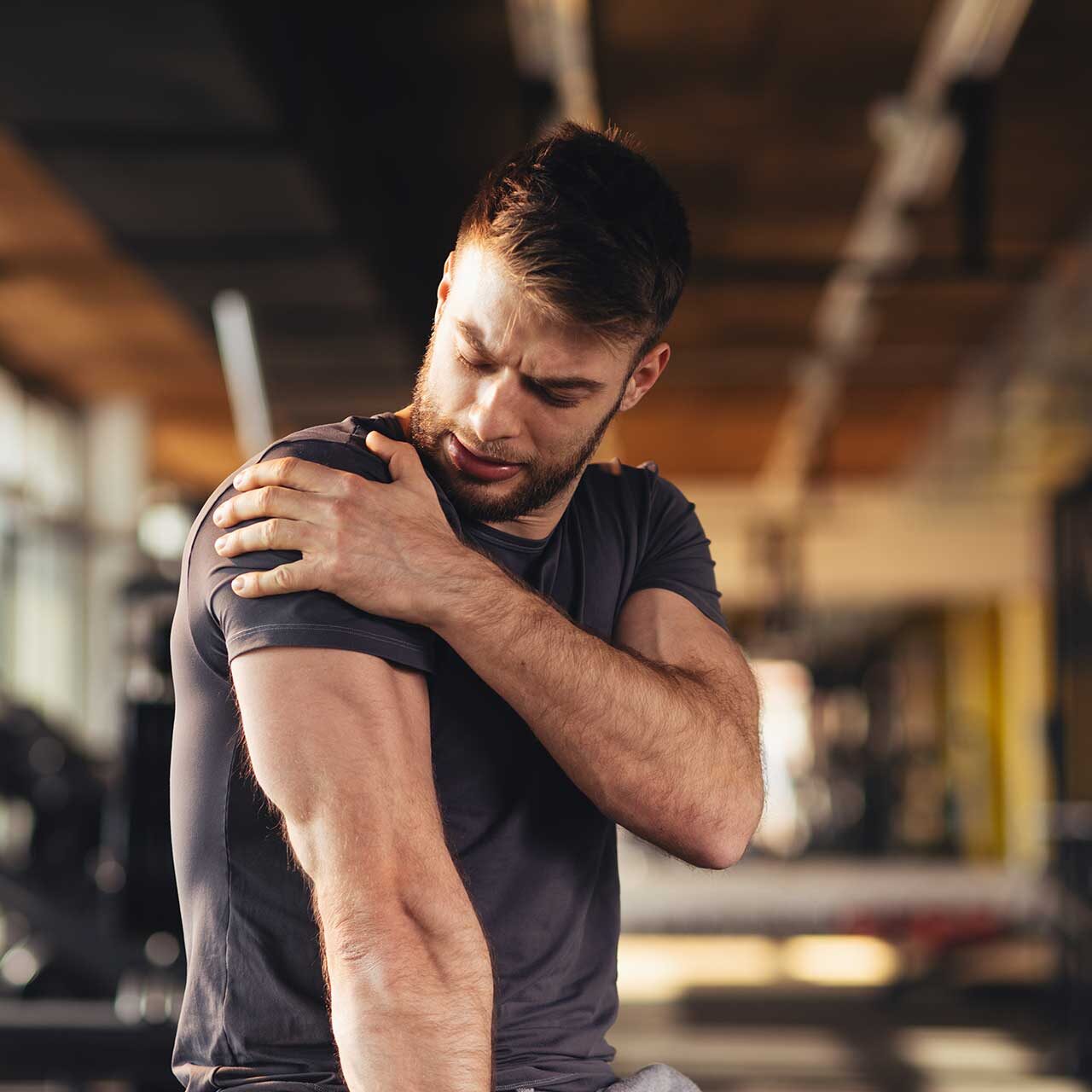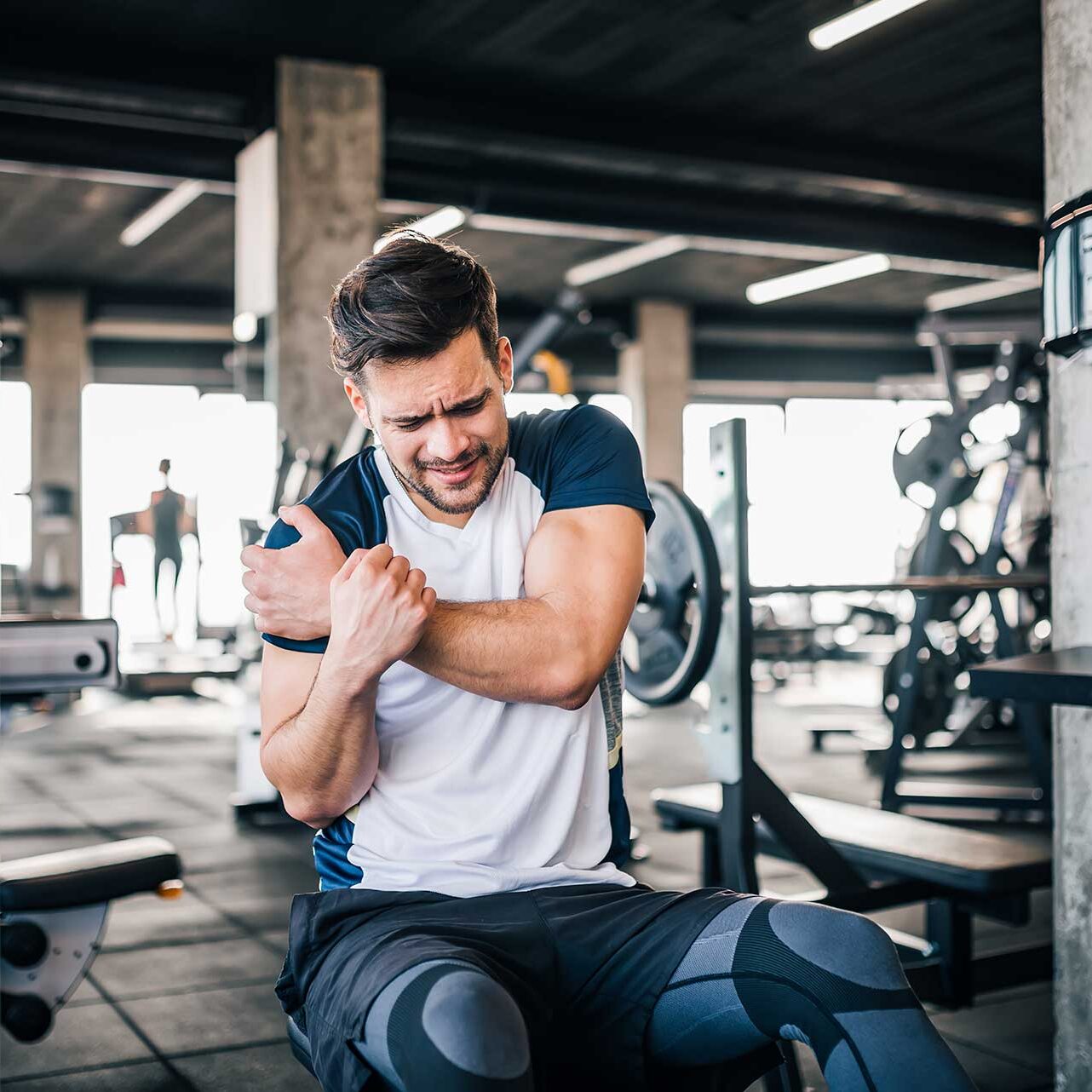MENU
FROZEN SHOULDER
ARE YOU HAVING A DECREASED SHOULDER RANGE OF MOTION, PAIN AND STIFFNESS?
Adhesive Capsulitis, otherwise known as Frozen Shoulder, may be the cause of your decreased motion and shoulder pain.
In frozen shoulder, the shoulder capsule thickens and becomes stiff. Thick bands of tissue called adhesions develop resulting in decreased ROM, pain, and stiffness.
- Stage I (Freezing): In the “freezing” stage, you will notice a gradual increase in pain and stiffness, as well as decreased range of motion. This stage can last anywhere from 6 weeks to 9 months.
- Stage II (Frozen): During this stage, pain intensity will decrease, however, stiffness remains relatively unchanged. This often affects sleep and common daily activities.
- Stage III (Thawing): Finally, shoulder motion will gradually begin to improve! You can expect a complete return of strength and range of motion, however, this may take several months to accomplish."
- The exact cause of frozen shoulder is unknown, however, risk factors include:
- Hormonal imbalances, such as thyroid disorder
- Diabetes or cardiovascular disease
- Smoking
- Weakened immune system
- History of trauma to the shoulder
- If you are between the ages of 40-60 and female, the risk of developing frozen shoulder also increases.
- Controlling inflammation:
- Short-term, cautious use of Non-steroidal anti-inflammatory medicines (NSAIDs), such as ibuprofen, naproxen, and aspirin, can help decrease swelling and pain.
- Steroid injections can temporarily decrease inflammation in the shoulder joint and may allow for the therapist to further mobilize and stretch the shoulder.
- Physical Therapy: Exercises and stretches designed to help increase shoulder range of motion are key to a faster recovery! You will be provided with an exercise program to complete at home in addition to supervised exercises and stretching progressions provided at each appointment.
Patience! Treatment requires tremendous patience, as there are few shortcuts and improvements will take time.
Consistency! Follow the home exercise guidelines provided by your therapist to get the most out of your therapy sessions.
Diet and nutrition! Limit the amount of inflammatory foods in your diet in order to reduce the severity and duration of frozen shoulder.
Use it or lose it! During the early stages of frozen shoulder immediately begin to gently use as much of your range of motion as you can without excessive discomfort!
What if you can’t move it? Then imagine moving it! When we lose range of motion, it’s both a physical and neurological loss.
Request an appointment with a physical therapist now to get a jump-start on faster healing!"

MENISCUS
ARE YOU HAVING A PAIN IN THE KNEE WITH SITTING, BENDING, SQUATTING OR STAIRS?
A meniscus injury may be the cause of your knee pain. Here’s what you need to know:

The meniscus is a knee is a thickened crescent-shaped cartilage pad between the two joints formed by the femur (the thigh bone) and the tibia (the shin bone).
- A popping sensation
- Swelling or stiffness.
- Pain, especially when twisting or rotating your knee
- Difficulty straightening your knee fully
- Feeling as though your knee is locked in place when you try to move it
- Aggressive pivoting or sudden stops and turns
- Deep squatting or lifting something heavy can sometimes lead to a torn meniscus
- Degenerative changes of the knee can contribute to a torn meniscus with little or no trauma
- Controlling inflammation: This is especially important in the early stages. Reducing pain and inflammation early with decrease the chances of this becoming a more chronic condition that is more difficult to treat
- Avoiding painful movements or activities: Continuing to push through painful symptoms will only make the condition worse and could lead to a more serious situation such as a tear which could require surgery
- Get into physical therapy: A proper evaluation by a physical therapist will help you restore motion and function. Learning how to correct mechanics and strengthening the surrounding muscles, will minimize painful symptoms. Physical therapy will be able to provide treatments such as joint mobilization, myofascial release, and soft tissue mobility to allow for more rapid return to function. It is important to not wait. Request an appointment with a physical therapist early so that symptoms do not get out of control. The longer the symptoms last, the more difficult they are to heal. More and more people are getting benefits from physical therapy over medication and injections
- Avoiding foods that have high glucose levels can help control pain
- Natural anti-inflammatory herbs and spices are preferred over prescribed NSAIDs. Turmeric is a great example of this
- Traditional treatments such as heat/ice or Tylenol are temporary solutions at best but do not fix the root cause. And they can be harmful.
- Relieving pressure off the meniscus by strengthening the correct muscles. This will allow the meniscus to heal.
- Do not pivot, deep squat, kneel or sit for >30min
- Be cautious of continued use of pain meds or injections as they can lead to accelerated weakness and could lead to more damage down the road.
- Request an appointment with a physical therapist early so that symptoms do not get out of control."
ROTATOR CUFF TENDONITIS
DOES IT HURT TO MOVE YOUR ARM OVERHEAD, OR BEHIND YOUR BACK?
Rotator cuff tendonitis may be the cause of your shoulder pain.
Rotator Cuff Tendonitis is inflammation of 1 or more of the rotator cuff muscles.
A group of 4 muscles in the shoulder that assist in lifting, rotating, and stabilizing the arm
- Pain when reaching overhead or lifting objects with a straight arm
- Clicking or popping sensation with raising the arm above shoulder height
- Pain at night from sleeping on the involved shoulder
- Pain with reaching behind the back or behind the head
- Shoulder stiffness and weakness while using shoulder
- Most commonly, rotator cuff tendonitis is caused by repetitive micro-trauma to the tendons
- Overuse through work or exercise is the most common cause
- Repetitive overhead activities may lead to strain or degeneration of the rotator cuff muscles
- Poor posture that occurs with prolonged sitting
- Controlling inflammation: This is especially important in the early stages. Reducing pain and inflammation early with decrease the chances of this becoming a more chronic condition that is more difficult to treat
- Avoiding painful movements or activities: Continuing to push through painful symptoms will only make the condition worse and could lead to a more serious situation such as a tear
- Get into physical therapy: A proper evaluation by a physical therapist will help you restore motion and function. Learning how to correct posture and strengthen the rotator cuff, along with the surrounding muscles, will minimize painful symptoms. Physical therapy will be able to provide treatments such as joint mobilization, myofascial release, and soft tissue mobility to allow for more rapid return to function. It is important to not wait. Request an appointment with a physical therapist early so that symptoms do not get out of control. The longer the symptoms last, the more difficult they are to heal. More and more people are getting benefits from physical therapy over medication and injections
- Avoid slouching postures and any repetitive motions involving your arm
- Proper nutrition and natural supplementation.
- Avoiding foods that have high glucose levels can help control pain.
- Natural anti-inflammatory herbs and spices are preferred over prescribed NSAIDs. Turmeric is a great example of this
- Request an appointment with a physical therapist early so that symptoms do not get out of control."

SCIATICA
ARE YOU HAVING PAIN IN THE LOWER BACK WITH SITTING, BENDING, SQUATTING OR TWISTING?
Sciatica could be the cause of your low back pain. Here’s what you need to know:

Sciatica is characterized by tingling, or numbness produced by an irritation of the nerve roots that lead to the sciatic nerve.
The sciatic exits from the lower back and then extends down the back of the leg to the ankle and foot.
- Bulging disc
- Nerve root compression (pinched nerve)
- Poor core stability
- Controlling inflammation: This is especially important in the early stages. Reducing pain and inflammation early with decrease the chances of this becoming a more chronic condition that is more difficult to treat
- Avoiding painful movements or activities: Continuing to push through painful symptoms will only make the condition worse and could lead to a more serious situation such as a tear
- Get into physical therapy: A proper evaluation by a physical therapist will help you restore motion and function. Learning how to correct mechanics and strengthening the surrounding muscles, will minimize painful symptoms. Physical therapy will be able to provide treatments such as joint mobilization, myofascial release, and soft tissue mobility to allow for more rapid return to function.It is important to not wait. Request an appointment with a physical therapist early so that symptoms do not get out of control. The longer the symptoms last, the more difficult they are to heal. More and more people are getting benefits from physical therapy over medication and injections
- Avoiding foods that have high glucose levels can help control pain
- Natural anti-inflammatory herbs and spices are preferred over prescribed NSAIDs. Turmeric is a great example of this
- Relieving pressure off the compressed and irritated nerves by strengthening the correct muscles and improving flexibility. This allows the back to move without irritating the inflamed nerve and lets back begin to heal
- Do not sit >30min
- Increase your hip flexor mobility
- Request an appointment with a physical therapist early so that symptoms do not get out of control."

